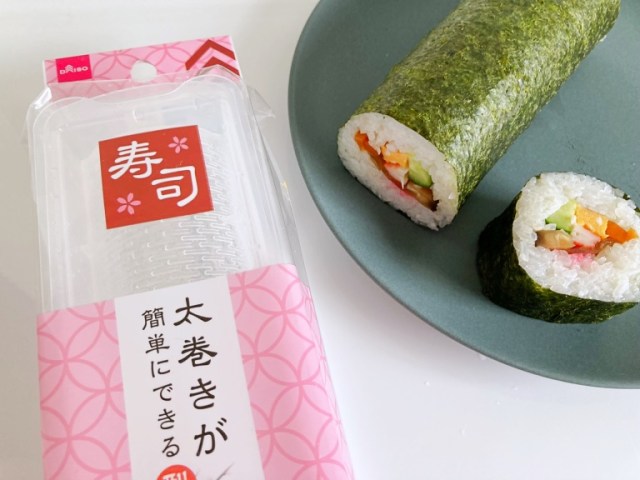
We hit up Japan’s favorite 100 yen shop to see if we can be lucky on a budget.
Japan’s Setsubun celebration is coming up on February 3, which means it’s almost time to eat giant ehomaki sushi rolls for good luck. But what do you do if you’re not already lucky enough to have a whole bunch of sushi markets and specialty stores around you that are offering ehomaki?
Then you’ll have to make your own luck, by making your own ehomaki. That’s what our Japanese-language reporter Aoi Kuroneko did, and the first step on her road to good luck was a trip to 100 yen shop Daiso.
Daiso isn’t quite wonderous enough to sell pre-made ehomaki for 100 yen, but they do sell a piece of equipment for that price that they promise will make creating your own ehomaki a snap: the Futomaki Mold, or “Sushigata Makizushiyo Futomaki” if you’re asking for it in Japanese.
▼ The Futomaki Mold consists of two parts.
Ehomaki are themselves a subset of futomaki, or “thick roll” sushi. There’s no exact scientific threshold at which a futomaki becomes an ehomaki, but the general consensus is that ehomaki, as a sign of good things to come in the near future, should be stuffed with a large variety of delicious ingredients. Some say that seven fillings (aside from the rice) is the ideal lucky number, so that’s what Aoi went with.
Aoi’s seven fillings, pictured above, were:
1. Kanpyo / かんぴょう (simmered gourd),
2. Atsuyaki tamago / 厚焼き玉子 (thick omelet strips)
3. Cucumbers / きゅうり
4. Imitation crab / カニカマ
5. Sakura denbu / さくらでんぶ (pink fish flakes)
6. Shiitake mushrooms / しいたけ
7. Carrots / にんじん
That’s in addition to, of course, vinegared rice and nori (dried seaweed).
Once she had her ingredients sorted, it was time to see if Daiso’s 100-yen futomaki mold was up to the task. Aoi started by rinsing both the base and press/lid in cold water, to help prevent the rice from sticking to the plastic. Next, she filled the base up about 70-percent full with rice, making an indentation in the middle into which she inserted her fillings.
Once all seven were in there, she filled the rest of the base with rice, piling it above the rim, then pressed down with the lid.
This process actually felt more like making oshizushi, or “pressed sushi,” in which the ingredients are placed in a box and pressed into a dense, squared-off shape. But because of the cylindrical shape of the mold, Aoi ended up with a nice sushi cylinder, which she now needed to roll up in nori.
Laying out a strip of seaweed on a cutting board, Aoi removed the sushi mold’s lid and turned it over at one end of the nori. The lid is designed so that you can use it to press the bottom of the base to help dislodge the contents, but if you’re having trouble, you’ll want to resist the urge to use chopsticks or a rice scoop, as that might tear the cylinder. Instead, do what Aoi did and put a dab of vinegar on your fingers, then gently remove the cylinder by hand with a soft touch.
Despite spending only 100 yen on the mold, Aoi’s ehomaki came out looking quite beautiful. So beautiful, in fact, that she wanted to make extra sure it looked just as nice after it was cut.
Before slicing, Aoi took a moist towel and wiped her chef’s knife, and this did the trick in producing a smooth, clean cut.
While she was at Daiso, Aoi also picked up one of their hosomaki, or “narrow roll” sushi molds, which has three pieces.
The process is similar to the one for the futomaki mold, except that you put the rice and fillings into the core and then set the core into the base before pressing down with the press/lid.
And once again, the sushi rolls came out looking picture-perfect!
So you don’t need a sushi shop nearby to enjoy ehomaki, as long as you’ve got a Daiso and a compass so you know which way is east-northeast, this year’s lucky direction you’re supposed to face while you eat your Setsubun ehomaki.
Photos ©SoraNews24
● Want to hear about SoraNews24’s latest articles as soon as they’re published? Follow us on Facebook and Twitter!
[ Read in Japanese ]


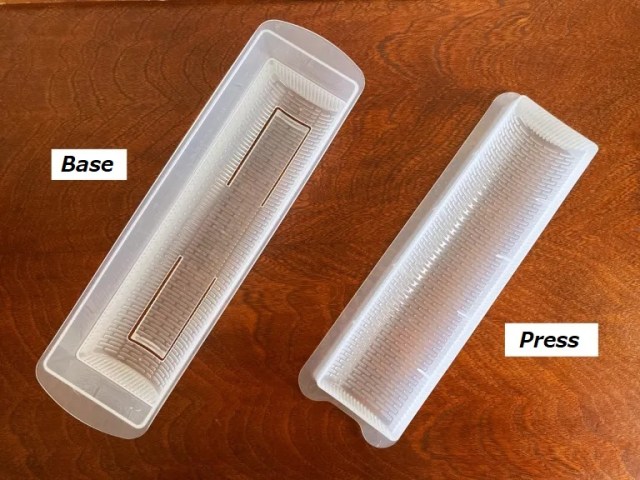
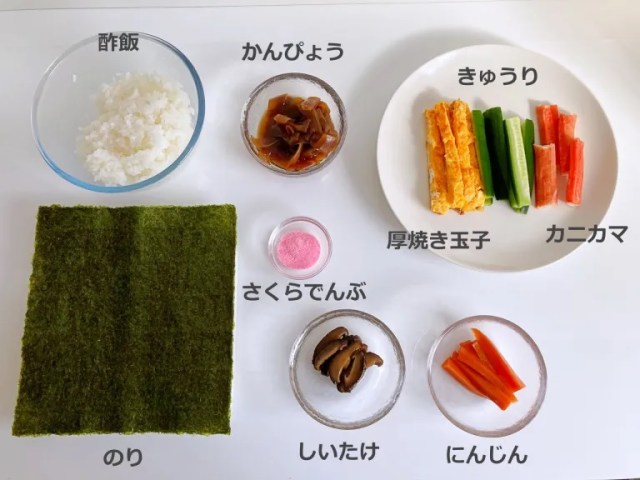
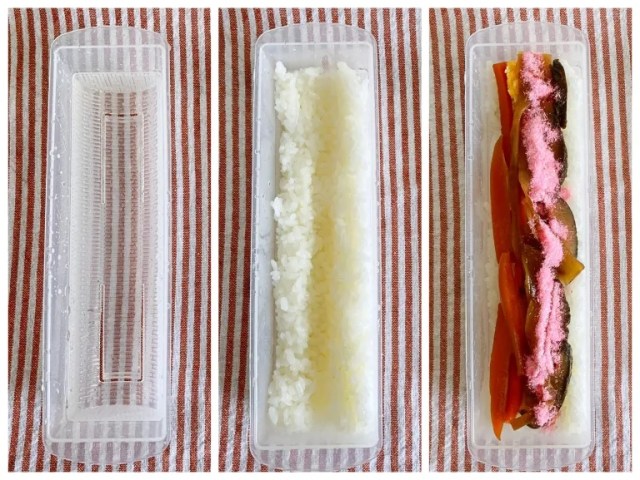
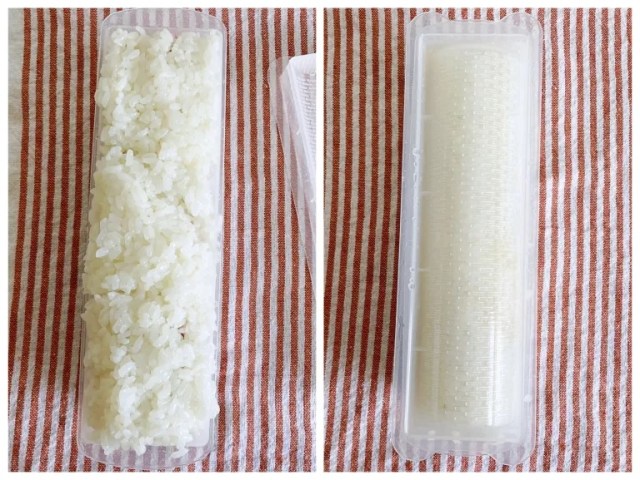
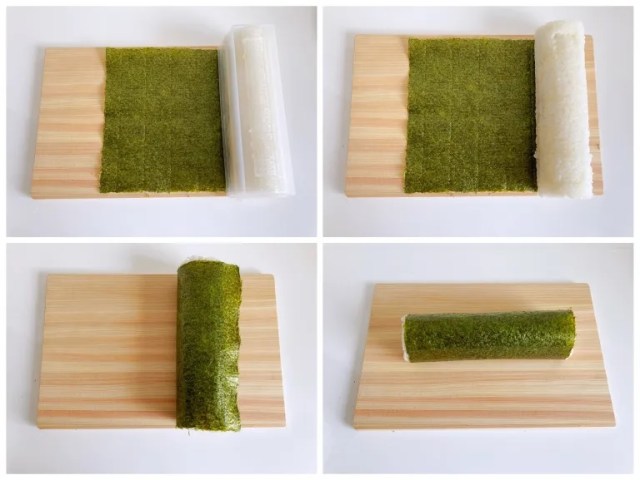

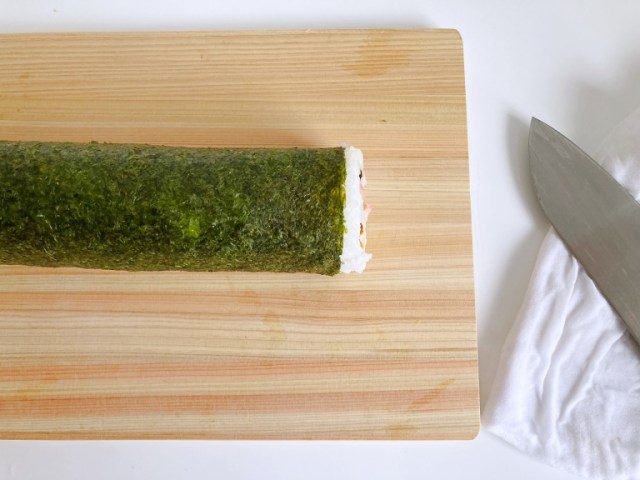
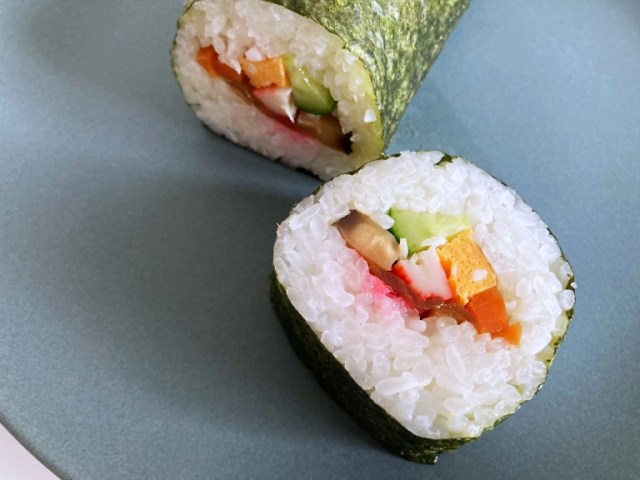

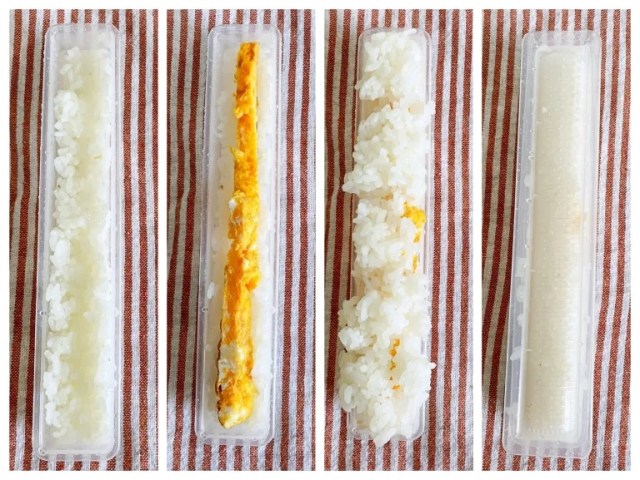

 Which Japanese convenience store has the best lucky sushi roll? Unclear results show clear winner
Which Japanese convenience store has the best lucky sushi roll? Unclear results show clear winner Sushiro celebrates a traditional Japanese holiday with this…sushi thing
Sushiro celebrates a traditional Japanese holiday with this…sushi thing Cost of uneaten ehomaki sushi rolls in 2022 estimated to be over one billion yen
Cost of uneaten ehomaki sushi rolls in 2022 estimated to be over one billion yen Japanese department store wishes you a good year ahead with 150 types of delicious ehomaki
Japanese department store wishes you a good year ahead with 150 types of delicious ehomaki Japan’s crazy 6,000-calorie sushi roll includes a pizza as a topping
Japan’s crazy 6,000-calorie sushi roll includes a pizza as a topping How to order snacks on a Shinkansen bullet train in Japan
How to order snacks on a Shinkansen bullet train in Japan Hello, cosmetics! Clinique teams up with Hello Kitty this summer for first-time collaboration
Hello, cosmetics! Clinique teams up with Hello Kitty this summer for first-time collaboration Burger King Japan suddenly adds Dr. Pepper and Dr. Pepper floats to its menu nationwide
Burger King Japan suddenly adds Dr. Pepper and Dr. Pepper floats to its menu nationwide Demon Slayer: Kimetsu no Yaiba gets new roller coaster attractions and food at Universal Studios Japan
Demon Slayer: Kimetsu no Yaiba gets new roller coaster attractions and food at Universal Studios Japan New samurai glasses are Japan’s latest weird must-have souvenir
New samurai glasses are Japan’s latest weird must-have souvenir New Nintendo Lego kit is a beautiful piece of moving pixel art of Mario and Yoshi【Photos】
New Nintendo Lego kit is a beautiful piece of moving pixel art of Mario and Yoshi【Photos】 Nintendo history you can feel – Super NES, N64, and GameCube controllers become capsule toys
Nintendo history you can feel – Super NES, N64, and GameCube controllers become capsule toys Japan’s new difficult-to-drink-from beer glass protects your liver, but it’s a brutal experience
Japan’s new difficult-to-drink-from beer glass protects your liver, but it’s a brutal experience 10 things you should buy at 7-Eleven in Japan
10 things you should buy at 7-Eleven in Japan McDonald’s adds new watermelon frappe and fruity macaron to its menu in Japan
McDonald’s adds new watermelon frappe and fruity macaron to its menu in Japan “The most Delicious Cup Noodle in history” – Japan’s French Cup Noodle wins our heart【Taste test】
“The most Delicious Cup Noodle in history” – Japan’s French Cup Noodle wins our heart【Taste test】 Starbucks releases a cute Frappuccino and Unicorn Cake…but not in Japan
Starbucks releases a cute Frappuccino and Unicorn Cake…but not in Japan Kyoto Tower mascot termination reveals dark side behind cute Japanese characters
Kyoto Tower mascot termination reveals dark side behind cute Japanese characters McDonald’s Japan’s Soft Twist Tower: A phantom ice cream only sold at select branches
McDonald’s Japan’s Soft Twist Tower: A phantom ice cream only sold at select branches Yabai Ramen: What makes this Japanese ramen so dangerous?
Yabai Ramen: What makes this Japanese ramen so dangerous? Finally! Nintendo Japan expands Switch 8-bit controller sales to everybody, Online member or not
Finally! Nintendo Japan expands Switch 8-bit controller sales to everybody, Online member or not Japanese government wants to build luxury resorts in all national parks for foreign tourists
Japanese government wants to build luxury resorts in all national parks for foreign tourists To combat declining birth rate, Japan to begin offering “Breeding Visas” to foreigners
To combat declining birth rate, Japan to begin offering “Breeding Visas” to foreigners Studio Ghibli releases anime heroine cosplay dresses that are super comfy to wear
Studio Ghibli releases anime heroine cosplay dresses that are super comfy to wear Woman charged for driving suitcase without a license in Osaka
Woman charged for driving suitcase without a license in Osaka Studio Ghibli unveils My Neighbour Totoro miniature house model
Studio Ghibli unveils My Neighbour Totoro miniature house model Kyoto experiencing problems with foreign tourists not paying for bus fares, but not on purpose
Kyoto experiencing problems with foreign tourists not paying for bus fares, but not on purpose Fighting mild hunger with a Japanese soda that turns into jelly in the stomach【Taste test】
Fighting mild hunger with a Japanese soda that turns into jelly in the stomach【Taste test】 Studio Ghibli’s Howl’s Moving Castle tapestry unveiled in Japan for first time
Studio Ghibli’s Howl’s Moving Castle tapestry unveiled in Japan for first time McDonald’s new Happy Meals offer up cute and practical Sanrio lifestyle goods
McDonald’s new Happy Meals offer up cute and practical Sanrio lifestyle goods Sales of Japan’s most convenient train ticket/shopping payment cards suspended indefinitely
Sales of Japan’s most convenient train ticket/shopping payment cards suspended indefinitely Sold-out Studio Ghibli desktop humidifiers are back so Totoro can help you through the dry season
Sold-out Studio Ghibli desktop humidifiers are back so Totoro can help you through the dry season Japanese government to make first change to romanization spelling rules since the 1950s
Japanese government to make first change to romanization spelling rules since the 1950s Foreigner’s request for help in Tokyo makes us sad for the state of society
Foreigner’s request for help in Tokyo makes us sad for the state of society Ghibli founders Toshio Suzuki and Hayao Miyazaki contribute to Japanese whisky Totoro label design
Ghibli founders Toshio Suzuki and Hayao Miyazaki contribute to Japanese whisky Totoro label design Doraemon found buried at sea as scene from 1993 anime becomes real life【Photos】
Doraemon found buried at sea as scene from 1993 anime becomes real life【Photos】 Tokyo’s most famous Starbucks is closed
Tokyo’s most famous Starbucks is closed Princesses, fruits, and blacksmiths: Study reveals the 30 most unusual family names in Japan
Princesses, fruits, and blacksmiths: Study reveals the 30 most unusual family names in Japan How to deal with sushi harassment in the workplace
How to deal with sushi harassment in the workplace Dean & DeLuca now has fancy good luck sushi rolls to help Japan celebrate Setsubun【Photos】
Dean & DeLuca now has fancy good luck sushi rolls to help Japan celebrate Setsubun【Photos】 Behold a 10,000-yen sushi roll covered in gold! 【Taste Test】
Behold a 10,000-yen sushi roll covered in gold! 【Taste Test】 Lucky sushi rolls coming to Kansai Aeon stores again for “Summer Setsubun”
Lucky sushi rolls coming to Kansai Aeon stores again for “Summer Setsubun” The greatest sushi roll in Japanese history is actually nine sushi rolls in one【Photos】
The greatest sushi roll in Japanese history is actually nine sushi rolls in one【Photos】 We made pan-fried and baked mini apple pies using gyoza dumpling wrappers【SoraKitchen】
We made pan-fried and baked mini apple pies using gyoza dumpling wrappers【SoraKitchen】 Subway rivals a traditional Japanese sushi roll with its own traditional Japanese BLT
Subway rivals a traditional Japanese sushi roll with its own traditional Japanese BLT Daiso’s super-easy, super-cheap sushi maker lets you make sushi rolls without rolling anything
Daiso’s super-easy, super-cheap sushi maker lets you make sushi rolls without rolling anything Pray for sound health for your beloved pets this Setsubun with special good luck sushi rolls just for them
Pray for sound health for your beloved pets this Setsubun with special good luck sushi rolls just for them $89 “Phantasmal Sushi Roll” fancies up life with Matsusaka beef and truffle salt 【Taste Test】
$89 “Phantasmal Sushi Roll” fancies up life with Matsusaka beef and truffle salt 【Taste Test】 Chocolate meets sushi in Kura Sushi’s Valentine’s dessert — the “Tiramisushi”
Chocolate meets sushi in Kura Sushi’s Valentine’s dessert — the “Tiramisushi” Broccoli and chocolate? We try vegetables in chocolate fondue to test Japanese company’s claims
Broccoli and chocolate? We try vegetables in chocolate fondue to test Japanese company’s claims Cat pancakes: Easier to make than normal ones thanks to super-cute, super-cheap Japanese gadget
Cat pancakes: Easier to make than normal ones thanks to super-cute, super-cheap Japanese gadget We bought a Rilakkuma custard pudding cake and found out what a carefree bear tastes like
We bought a Rilakkuma custard pudding cake and found out what a carefree bear tastes like Japanese miko shrine maidens turn into off-road racing queens in new commercial 【Video】
Japanese miko shrine maidens turn into off-road racing queens in new commercial 【Video】 We try a frozen sushi box from Rejyu, and it was way better than it sounds
We try a frozen sushi box from Rejyu, and it was way better than it sounds
Leave a Reply